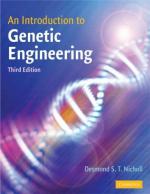|
This section contains 363 words (approx. 2 pages at 300 words per page) |

|
One of the most contentious issues regarding the regulation of genetic research involves the use of stem cells derived from human embryos. As mammalian embryos develop, their cells become genetically programmed to become a specific type of tissue—heart, nerve, skin, etc. Embryonic stem cells are special because they can be genetically manipulated into becoming any type of tissue. This makes them ideal for gene therapy and a host of other medical applications. Scientists with a supply of stem cells might be able to, for example, genetically engineer the cells in the lab, then induce them to become bone marrow cells or livers for patients in need of transplants.
The problem with stem cells is their source: Until recently, researchers could only obtain stem cells from aborted fetuses or from human embryos created through the process of in vitro fertilization...
|
This section contains 363 words (approx. 2 pages at 300 words per page) |

|




